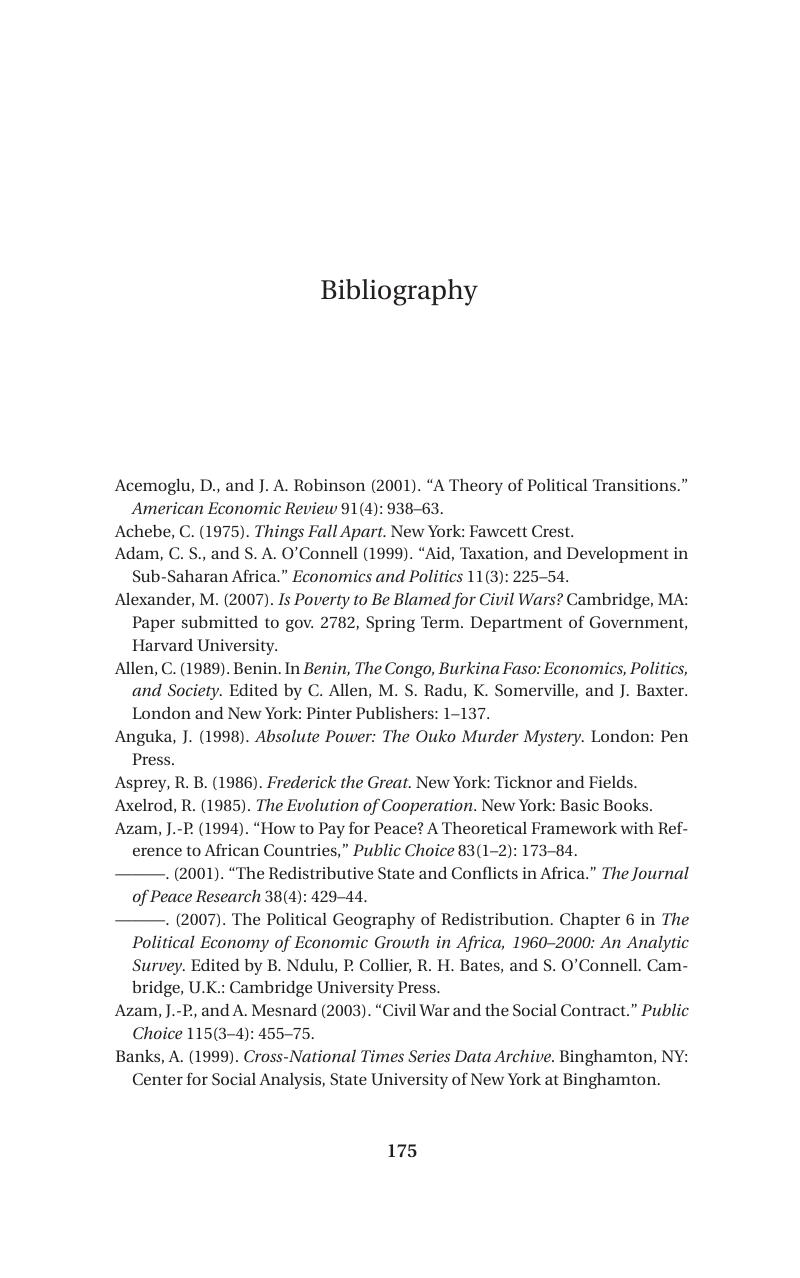Bibliography
Published online by Cambridge University Press: 05 September 2012
Summary

Information
- Type
- Chapter
- Information
- When Things Fell ApartState Failure in Late-Century Africa, pp. 175 - 186Publisher: Cambridge University PressPrint publication year: 2008
